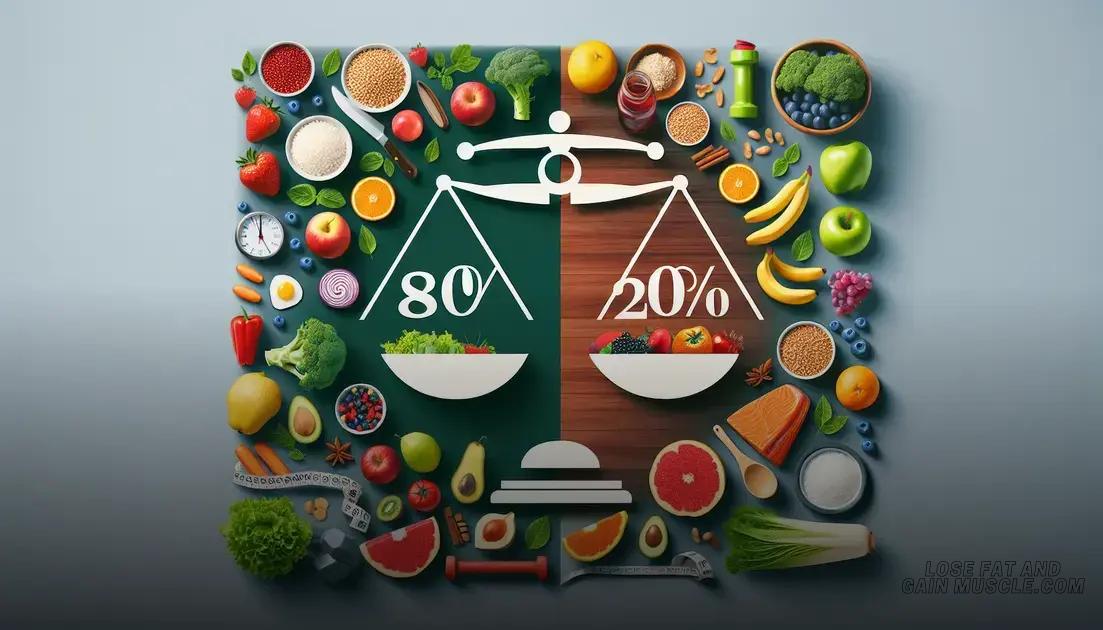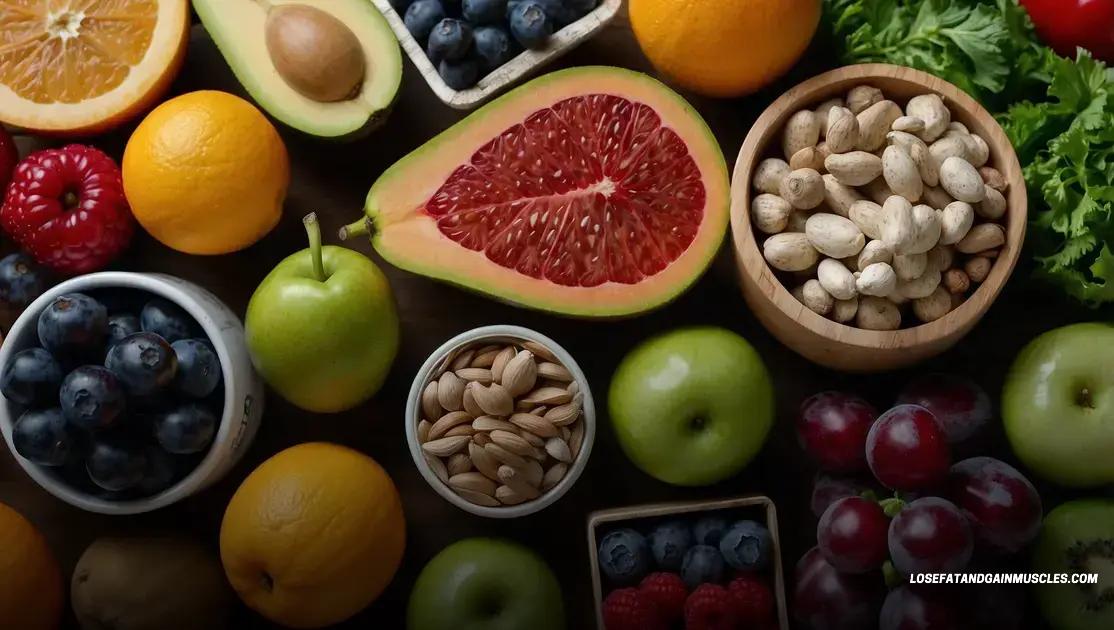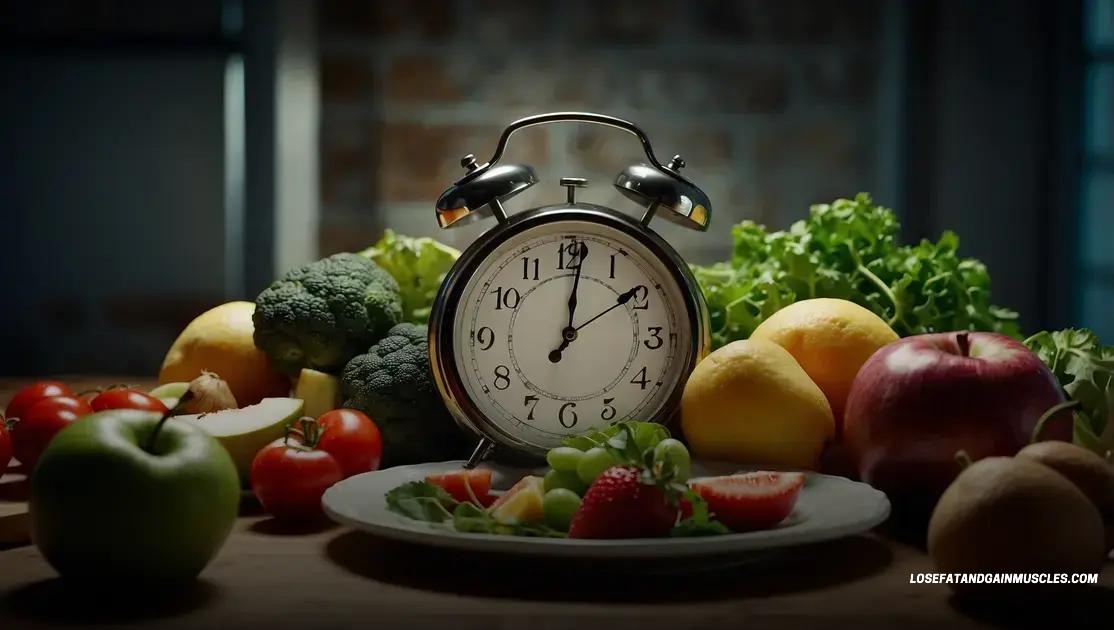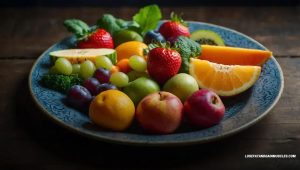What is the 80 20 Rule to Lose Weight? Discover Effective Strategies
The 80 20 Rule for weight loss suggests that 80% of your results come from 20% of your efforts. By focusing on key healthy habits while allowing for occasional treats, you can effectively lose weight and maintain a balanced lifestyle.
Have you ever wondered how to lose weight effectively? The 80 20 rule to lose weight offers a simple yet powerful strategy. This rule suggests that by focusing on 20% of the effort that provides 80% of the results, you can achieve your weight loss goals without feeling deprived. In this article, we’ll delve into the meaning of the 80 20 rule, how to apply it to your diet, the science behind it, and share success stories that inspire!
Understanding the 80 20 Rule
The 80 20 Rule, also known as the Pareto Principle, is a simple concept that can transform the way you approach weight loss. It suggests that 80% of your results come from just 20% of your efforts. In the context of weight loss, this means that a small number of changes in your diet and exercise routine can lead to significant results.
How the 80 20 Rule Works
Basically, by focusing on the right actions, you can maximize your weight loss while minimizing the effort needed. Instead of overwhelming yourself with complex diet plans, you can concentrate on the few key habits that can bring about the most change.
Applying the Principle
For example, eating more whole foods and reducing processed foods may provide the majority of your weight loss results. Similarly, incorporating simple exercise routines, such as walking or basic strength training, can yield substantial benefits.
Finding Balance
The beauty of the 80 20 Rule is that it doesn’t require perfection. You can enjoy your favorite treats 20% of the time while staying on track with healthy choices for the remaining 80%. This balanced approach helps prevent feelings of deprivation and supports long-term success.
By understanding the 80 20 Rule, you equip yourself with practical strategies to navigate your weight loss journey more effectively. This approach not only simplifies the process but also encourages a healthier relationship with food and exercise.
Applying the 80 20 Rule to Diet
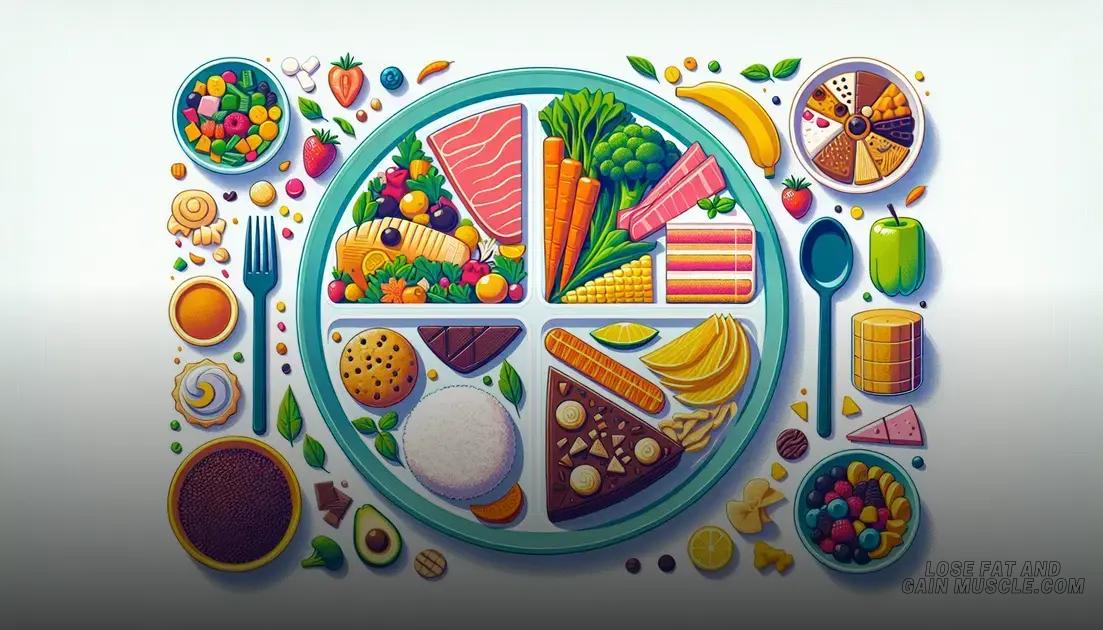
Applying the 80 20 Rule to diet is straightforward and can make a big difference in your weight loss journey. The idea is to focus on the few dietary changes that will yield the most significant results. Instead of overhauling your entire eating plan, concentrate on simple, impactful habits.
Identify Key Foods
Start by identifying healthy foods that are beneficial for weight loss. Foods like fruits, vegetables, lean proteins, and whole grains should make up 80% of your diet. These foods are not only nutritious but also help keep you full and energized.
Limit Processed Foods
The remaining 20% can include your favorite treats or processed foods. By allowing yourself to enjoy these foods occasionally, you can avoid feelings of deprivation that often lead to binge eating. This balance makes it easier to stick to your diet in the long run.
Create Balanced Meals
When planning meals, aim for a plate that consists of 80% whole foods and 20% indulgent items. For instance, a meal could include a large salad with grilled chicken (80%) and a small portion of creamy dressing or a slice of pie (20%). This way, you enjoy flavor without derailing your diet.
Monitor Portions
Portion control is essential when applying the 80 20 Rule. You can still enjoy your favorite snacks, but keep the portions limited. Use smaller plates or bowls to help manage your servings and prevent overeating.
Stay Mindful
Mindful eating is another helpful strategy. Pay attention to how different foods make you feel. This awareness can help you choose nutrient-rich options 80% of the time while allowing yourself to enjoy less healthy choices 20% of the time without guilt.
By applying the 80 20 Rule to diet, you can create a sustainable and enjoyable eating pattern that promotes weight loss without causing stress or restriction.
The Science Behind the 80 20 Rule
The 80 20 Rule is backed by solid science and helps explain why a small number of efforts can lead to most outcomes. This principle, also called the Pareto Principle, originated from an observation made by Vilfredo Pareto, an Italian economist. He noticed that 80% of Italy’s wealth was held by just 20% of the population.
Understanding the Ratio
This concept has since been applied to various fields, including diet and health. In weight loss, studies show that focusing on key behaviors can lead to substantial results. For instance, roughly 20% of the foods you eat can give you the nutrients and energy you need, while the other 80% may provide minor benefits.
Behavioral Science
Behavioral scientists suggest that small changes can create larger impacts due to habit formation. By consistently applying the 80 20 Rule, individuals can develop better habits and catch themselves from falling into unhealthy eating patterns.
Energy Balance
The science of weight loss also relies on the principle of energy balance. Consuming fewer calories than your body expends leads to weight loss. Adopting the 80 20 Rule facilitates this by encouraging nutrient-dense food choices that keep you satisfied longer with fewer calories.
Real-Life Applications
Many successful weight loss stories demonstrate how applying the 80 20 Rule helped individuals achieve their goals. For instance, focusing on whole foods and mindful eating practices can lead to lasting change without drastic diets.
Psychological Effects
Psychologically, the 80 20 Rule reduces the pressure to be perfect. It allows for flexibility, making it easier to maintain progress. This mindset decreases the likelihood of feelings of guilt over occasional indulgences, further promoting a healthier relationship with food.
In summary, the science behind the 80 20 Rule shows that a small set of habits can lead to significant weight loss results. By understanding this principle, you can take effective steps toward your health goals.
Benefits of the 80 20 Rule

The 80 20 Rule offers numerous benefits that make it an effective approach to weight loss. One of the main advantages is its simplicity. By focusing on a few key habits, you can create lasting changes without feeling overwhelmed.
Encourages Consistency
Because the rule highlights focusing on the most effective actions, it promotes consistency. Adhering to a balanced diet becomes easier when you know which choices yield the best results. This leads to more sustainable weight loss.
Reduces Feelings of Deprivation
With the 80 20 Rule, you don’t have to give up your favorite foods completely. By allowing small indulgences, you can enjoy your meals without feelings of guilt. This helps maintain a positive relationship with food and decreases the chances of binge eating.
Supports Mindful Eating
This principle encourages mindfulness in your eating habits. By being aware of the 20% of foods that provide significant benefits, you can make better food choices. This awareness can lead to healthier eating patterns and help you recognize when you feel full.
Focus on Quality Over Quantity
The 80 20 Rule promotes choosing high-quality, nutrient-rich foods instead of worrying about caloric intake alone. By prioritizing whole foods, you provide your body with essential nutrients, helping you feel more energetic and satisfied.
Adapts to Individual Needs
Every person’s dietary needs are unique. The flexibility of the 80 20 Rule allows you to customize your diet based on your preferences and lifestyle. It makes it easier to approach weight loss in a way that works for you personally.
Improves Long-Term Success
Instead of viewing weight loss as a strict diet, the 80 20 Rule promotes a lifestyle change. This approach encourages healthy habits that are easier to maintain over time, leading to long-term success in weight management.
Common Mistakes in Using the 80 20 Rule
While the 80 20 Rule can be a powerful tool for weight loss, there are common mistakes that people often make. Avoiding these pitfalls can help you use the principle more effectively.
Relying Too Much on Indulgences
A big mistake is misinterpreting the 80 20 Rule as a free pass to indulge too often. If you treat your 20% as an excuse to binge on unhealthy foods, it can counteract the benefits of your healthy choices. Remember, moderation is key.
Ignoring Nutritional Quality
Another common error is focusing solely on portion sizes rather than the nutritional quality of the food. Eating large amounts of processed or sugary foods in your 20% can lead to weight gain and health issues. Always prioritize whole, nutrient-rich foods.
Neglecting Physical Activity
Some believe that following the 80 20 Rule in diet means they don’t need to exercise. However, physical activity plays a significant role in weight loss and overall health. Make sure to include a balanced exercise routine in your lifestyle.
Not Tracking Progress
Many people fail to track their progress when using the 80 20 Rule. Without monitoring, it’s easy to lose sight of your goals. Keeping a record of your food intake and weight can help you stay accountable and identify areas for improvement.
Using the Rule as an Excuse
Sometimes, individuals may use the 80 20 Rule as an excuse for unhealthy habits. It’s important to recognize when you’re overindulging and not genuinely following the principle. Be honest with yourself about your choices.
Failing to Personalize the Rule
The 80 20 Rule is not one-size-fits-all. Each person has unique needs, and failing to customize the rule to fit your lifestyle can lead to frustration. Adjust the ratio as needed to match your preferences and goals.
By being aware of these common mistakes, you can more effectively use the 80 20 Rule to achieve your weight loss goals without falling into traps that may hinder your progress.
Real-Life Success Stories Using the 80 20 Rule

Many people have successfully used the 80 20 Rule to achieve their weight loss goals. These real-life success stories can inspire you to take action and make lasting changes in your life.
Sarah’s Transformation
Sarah struggled with her weight for years. After learning about the 80 20 Rule, she decided to focus on whole foods for 80% of her meals. For the other 20%, she allowed herself to enjoy pizza and chocolate. Over six months, Sarah lost 30 pounds, all while enjoying her favorite foods in moderation.
Mark’s Journey
Mark was overwhelmed with diets that did not work. When he adopted the 80 20 Rule, it changed everything. He started cooking healthy meals at home and made sure he included his favorite dessert once a week. By tracking his meals and exercising regularly, Mark lost 25 pounds and felt more energetic.
Emily’s Balanced Lifestyle
Emily found that focusing too much on dieting made her unhappy. Learning about the 80 20 Rule helped her find balance. She prioritized healthy snacks and meals while allowing room for treats during weekends. This shift enabled Emily to lose 15 pounds and maintain her progress without feeling restricted.
Tom’s Sustainable Changes
Tom wanted to lose weight without a crash diet. By using the 80 20 Rule, he incorporated better eating habits into his life. He focused on nutrient-dense foods most of the time and celebrated special occasions with his favorite dishes. Tom not only lost weight but also built a healthier relationship with food.
Amy’s Group Support
Amy joined a weight loss group that emphasized the 80 20 Rule. With support from others, she learned to enjoy healthy recipes while occasionally having her favorite snacks. This community approach helped her lose 20 pounds and stay motivated throughout her journey.
These inspiring stories show how effective the 80 20 Rule can be for achieving weight loss and creating a happy, balanced lifestyle. By following their examples, you too can reach your goals.
Putting the 80 20 Rule into Practice
The 80 20 Rule offers a simple yet effective approach to weight loss by emphasizing that a small number of changes can yield significant results.
By understanding and applying this principle in your diet, you can create a balanced lifestyle that allows for both healthy eating and occasional indulgences. Real-life success stories clearly illustrate that with motivation and the right strategies, you can achieve your weight loss goals without feeling deprived.
It’s essential to avoid common mistakes while following the 80 20 Rule and to personalize the approach to fit your individual needs. Remember, each person’s journey is unique.
Embracing the 80 20 Rule not only supports weight loss but also fosters a healthier relationship with food, enabling long-term success. Now that you have the knowledge, it’s time to take action and transform your life!
FAQ – Common Questions About the 80 20 Rule for Weight Loss
What is the 80 20 Rule?
The 80 20 Rule, also known as the Pareto Principle, suggests that 80% of outcomes come from 20% of causes. In weight loss, this means a small number of healthy habits can lead to significant results.
How can I apply the 80 20 Rule to my diet?
You can apply the 80 20 Rule by focusing on eating healthy, whole foods for 80% of your meals and allowing for treats in the other 20%. This approach helps maintain a balanced diet.
What are the benefits of using the 80 20 Rule?
Benefits include improved consistency, reduced feelings of deprivation, encouragement of mindful eating, and long-term success in maintaining a healthy lifestyle.
What common mistakes should I avoid when using the 80 20 Rule?
Common mistakes include overindulging during the 20%, ignoring nutritional quality, neglecting physical activity, and failing to personalize the rule to fit your needs.
Can you share any real-life success stories using the 80 20 Rule?
Many individuals have achieved weight loss by applying the 80 20 Rule, such as Sarah, who lost 30 pounds by focusing on whole foods while enjoying her favorite treats in moderation.
Is the 80 20 Rule suitable for everyone?
Yes, the 80 20 Rule can be adapted to fit individual needs and lifestyles, making it a flexible approach to weight loss that can work for most people.
